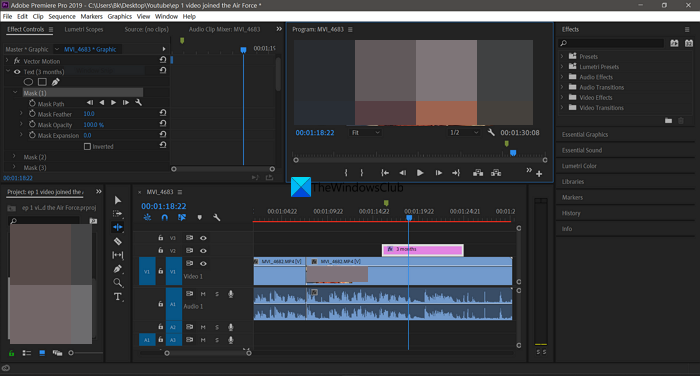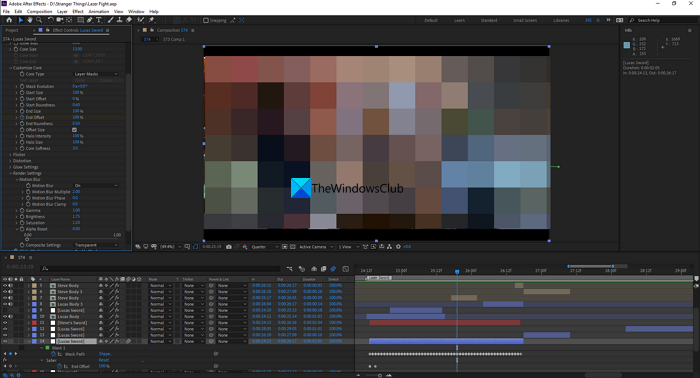Adobe Premiere Pro and Adobe After Effects are the two finest video editing programs that are available to use. They both go hand-in-hand to complete various tasks. The two programs can do similar tasks yet they are two different in functions. They are used in different stages of video-making and post-production processes. You need to use them together to create the best possible videos rather than using a single program. In this guide, we explain the difference between Adobe Premiere Pro and Adobe After Effects.

Difference between Adobe Premiere Pro and Adobe After Effects
Both Adobe Premiere Pro and Adobe After Effects are video editing programs made by the same company. There are so many differences between them and used at different stages for different tasks in the video-making process. The main differences between the both of them are:
- Usability of Premiere Pro and After Effects
- Strengths of Premiere Pro and After Effects
Let’s get into the details of each one.
Usability of Premiere Pro and After Effects

Adobe developed both Premiere Pro and After Effects with different intents. They are developed to do different tasks. They have similar functions to do, but they have their own usability features. If you are in a process of video-making, you first shoot all the necessary footage for the video, then you edit them to make a final product. After shooting the video, you need to assemble the footage, make cuts, edit audio, and sync them in a timeline to create a narrative. You have to do all this in Premiere Pro as it is built for timeline editing where you import your footage into the program and create a video by making cuts, editing, and syncing audio. Clips of the footage you have shot are dragged onto the timeline to create a sequence that tells a story or creates a moment. Once you are done with the sequencing of video footage, then you edit the audio associated with it by leveling it to normal levels and adding sound effects to the video. You can even make the color correction to the clips on Premiere Pro to make all the clips look better and synchronized. This is all you can do with Premiere Pro.
You have just created a sequence by editing your video footage and its audio. Now, if you want to create animations, text effects, or visual effects to make your video better, you need after effects. You can create motion graphics very easily on After Effects if you know its tools. After Effects is used to create titles, animations, visual effects, and all other things which do not involve cutting and sequencing of footage.
You can use any single program to create a video but it will not be as effective when you compare it to a video made using both programs. Both After Effects and Premiere Pro has options to import files of one program to another and work on them.
Read: How to stabilize Shaky Video Footage in Adobe Premiere Pro
Strengths of Premiere Pro and After Effects

Adobe Premiere Pro is the best when it comes to editing videos, sequencing them in the timeline, and editing their audio to create a full video without any additions to it. If you just need a program to cut your videos and set them in order and export them, Adobe Premiere Pro is your choice. You can even add basic text to your videos.
If you want to make your video more exciting by adding animated titles, motion graphics, and visual effects, you need to do it in Adobe After Effects. What you did in Premiere Pro is taken to the next level with After Effects. They both come with their own strengths and they become invincible when you combine them both.
Read: Fix Error Code 3, Error compiling movie, Export error on Premiere Pro
Is After Effects more powerful than Premiere Pro?
No. Nothing is more powerful than the other if they do not do the same functions. Adobe Premiere Pro and After Effects are developed to carry out different tasks that sound similar. Premiere Pro is used to cut videos, sequence them in a timeline, and level audio. After Effects is used to create animations, visual effects, etc.
Is After Effects faster than Premiere Pro?
If you have a good computer that meets the recommended system requirements of After Effects and Premiere Pro, they both perform fast. It all depends on the type of work you do use them and the effects you apply to them. The difference in their performance occurs with the sophistication of the tasks.
Related read: Premiere Pro crashing or stops working on Windows.
Leave a Reply